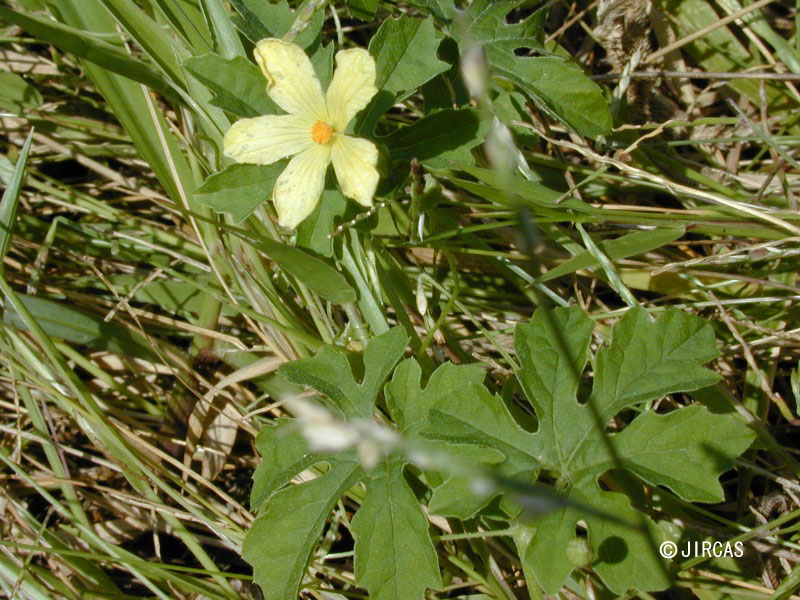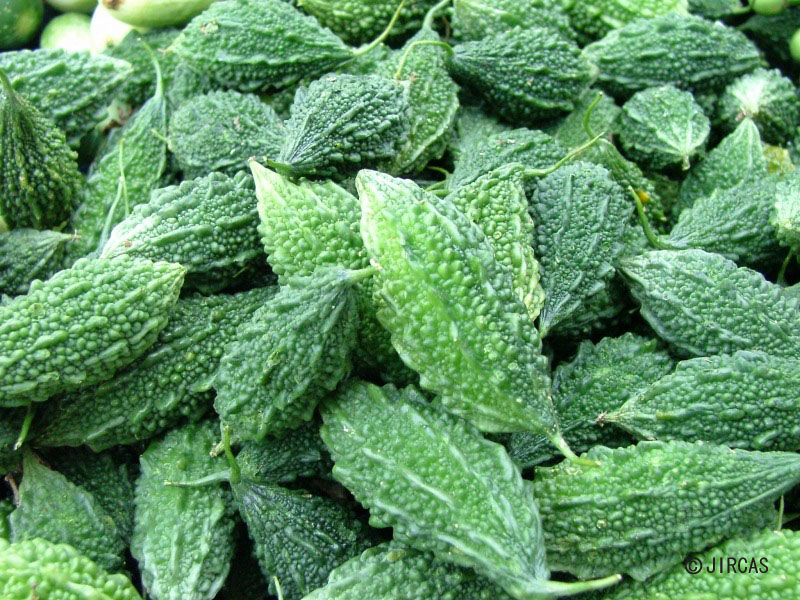Momordica charantia L. (Cucurbitaceae)
- Scientific name
- Momordica charantia L.
- Family name
- Cucurbitaceae
- Common name
- Wild bitter gourd (English); nigauri (Japanese)
- Local name
- Mara ki nok
Monoecious, annual climber, up to 4 m long. Stem 5-angled. Tendrils simple. Leaves simple, alternate, pellucidly dotted, palmately veined; petiole c. 5 cm long; blade ovate-reniform or suborbicular, c. 2.5–10 × 3–12.5 cm, base cordate; deeply palmately lobed 3–9, obovate. Flowers solitary, in leaf axils, bisexual, c. 3 cm in diameter, yellow; pedicellate, 1–2 cm in male flower, 0.2–4 cm in female flower. Calyx 5-lobed. Corolla 5-lobed. Stamens 5. Ovary inferior. Fruit a pepo, irregularly warty, orange when ripe, dehiscing from apex downwards to the base into 3 valves, 3–15 × 2–4 cm. Seeds brown.
Common weed in wastelands and abandoned land. Easily propagated by direct seeding, with vertical support. Grows year-round if sufficient water is available; prefers open shade.
Young fruits and shoots are harvested year-round and eaten raw, sometimes dipped in nam phrik (dipping sauces) , or cooked in curries.
Young fruits and shoots are harvested year-round and eaten raw, sometimes dipped in nam phrik (dipping sauces) , or cooked in curries.





